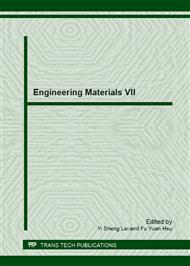p.1
p.9
p.13
p.19
p.31
p.37
p.43
p.49
Ceramic Foam Filters in Runner System Design for Castings
Abstract:
In the design of runner systems, ceramic foam filters are used for reducing the velocity of liquid metal in order to avoid so called bifilm defect resulting from a high gating velocity (over its critical gating velocity) in aluminum gravity casting. In this study, two types of runner systems incorporated with the ceramic foam filters were designed. In order to observe the flow phenomena in these two runner systems with and without the filters, a water analogy experiment in a transparent plastic mold was utilized. Furthermore, in order to understand the effect of the filters used in these systems, an aluminum sand casting experiment was conducted. The quality of the cast metal in the outlet area of the filter for these systems was investigated. The defect content of this casting sample was measured by the re-melt reduced pressure test (re-melt RPT) and followed by measuring its bulk density. An optimized runner system with the filter was suggested in this study. Keywords: ceramic foam filter, runner system design, gravity casting, critical gating velocity, bifilm defect.
Info:
Periodical:
Pages:
19-29
Citation:
Online since:
September 2013
Authors:
Price:
Сopyright:
© 2014 Trans Tech Publications Ltd. All Rights Reserved
Share:
Citation:


